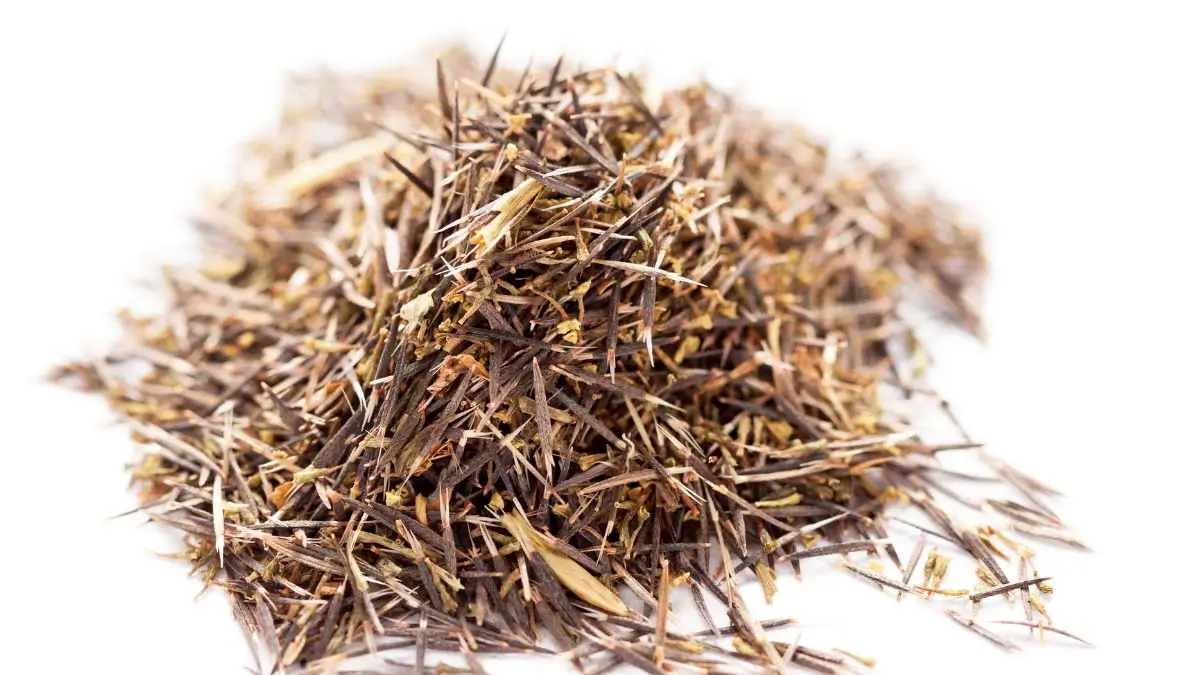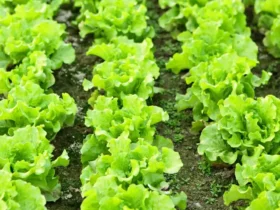Marigold seeds are the starting point for growing marigold plants, renowned for their vibrant colors and ability to attract beneficial insects. As a popular annual flower, marigolds are easy to grow from seed and can be sown directly in the garden or started indoors.
With proper care and nurturing, marigold seeds will germinate, producing vigorous seedlings that can be transplanted outdoors once all danger of frost has passed. Whether used in flowerbeds, containers, or vegetable gardens, marigolds add a splash of color and a natural pest deterrent.
We will explore everything you need to know about marigold seeds, from choosing the right variety to sowing and caring for the plants.
Varieties Of Marigold Seeds
Marigolds are vibrant and versatile flowers that are easy to grow from seeds. There are various varieties of marigold seeds, each with its unique characteristics and attributes. Let’s explore some popular types of marigold seeds:
French Marigolds
French marigolds are known for their compact size and bright, showy blooms. They come in a wide range of colors, including shades of yellow, orange, and red. With their bushy growth habit, French marigolds are perfect for borders, containers, or edging garden beds.
African Marigolds
African marigolds are larger than French marigolds and have big, bold flowers in shades of yellow, orange, and gold. These marigolds are great for adding a splash of color to your garden or landscape. African marigolds are often used in floral arrangements due to their size and vibrant hues.
Signet Marigolds
Signet marigolds are smaller in stature but make up for it with their delightful fragrance and delicate foliage. These marigolds produce clusters of small, edible flowers that are perfect for garnishing salads or decorating dishes. Signet marigolds are also attractive to pollinators like bees and butterflies.
Ideal Growing Conditions
Marigold seeds thrive when grown in the right conditions. Providing them with the ideal environment ensures healthy growth and vibrant blooms. Let’s take a closer look at the three key aspects of ideal growing conditions: sunlight requirements, soil quality, and watering needs.
Sunlight Requirements
To achieve the best results with your marigold seeds, it is crucial to take into account their sunlight requirements. Marigolds are sun-loving plants that require full sun exposure for at least six hours a day. Find a spot in your outdoor garden or balcony that receives ample sunlight throughout the day to ensure your marigolds get the light they need to thrive.
If you are growing marigolds indoors, place them near a sunny window or use artificial grow lights to provide the necessary light. Remember, insufficient sunlight can lead to weak plants and reduced flowering, so ensure your marigolds receive adequate sunshine.
Soil Quality
The soil quality plays a vital role in the growth and development of marigolds. These vibrant flowers prefer well-draining soil that is rich in organic matter. Before planting your marigold seeds, prepare the soil by adding compost or well-rotted manure to improve its fertility and drainage.
Marigolds are relatively adaptable and can tolerate different soil types, but they thrive best in slightly acidic to neutral soil with a pH range of 6.0 to 7.0. This pH range provides the optimal conditions for nutrient uptake and root development.
When planting marigolds, ensure the soil is loose and crumbly. Avoid compacted soil as it hampers root growth and restricts water penetration. Additionally, incorporating a layer of mulch around the plants helps retain moisture, regulates soil temperature, and suppresses weed growth.
Watering Needs
Watering is a crucial factor in maintaining healthy marigolds. These plants require regular watering, but overwatering can be detrimental. Provide enough water to keep the soil consistently moist, but not waterlogged. A simple way to check moisture levels is by inserting your finger into the soil up to the second knuckle. If it feels dry, it’s time to water.
When watering marigold plants, it is best to water at the base, avoiding the flowers and foliage. Watering in the early morning allows the leaves to dry out during the day, reducing the risk of fungal diseases. Remember, too much moisture can lead to root rot, while underwatering can cause stunted growth and poor flowering.

Planting Marigold Seeds
Planting Marigold Seeds is a simple and rewarding way to add vibrant color to your garden. Marigolds are known for their bright blooms and pest-repelling properties, making them a popular choice for both beginner and experienced gardeners. Whether you choose to start your seeds indoors or directly sow them in your garden, these hardy annuals are sure to bring joy to your outdoor space.
Indoor Start Method
Starting marigold seeds indoors gives them a head start and ensures a longer blooming period. Here’s a simple step-by-step guide for planting marigold seeds indoors:
- Fill a tray with a moistened seed-starting mix.
- Press the marigold seeds into the soil, spacing them about 2 inches apart.
- Cover the tray with plastic wrap to create a greenhouse effect.
- Place the tray in a warm, sunny location and keep the soil consistently moist.
- Once the seedlings have two sets of true leaves, transplant them into individual pots.
- Harden off the seedlings before planting them outdoors.
Direct Sowing In The Garden
If you prefer to sow marigold seeds directly in your garden, follow these steps for successful outdoor planting:
- Choose a sunny location with well-drained soil.
- Prepare the soil by loosening it and removing any debris.
- Scatter the marigold seeds over the soil, then cover them lightly with more soil.
- Water the area gently to settle the soil and keep it consistently moist as the seeds germinate.
- Thin the seedlings once they have a few sets of true leaves, allowing 8-10 inches between plants.
- Enjoy the colorful blooms as they grow and thrive in your garden.
Caring For Marigold Plants
Marigolds are vibrant and hardy flowers that are a popular choice for many gardeners. Caring for marigold plants ensures that they thrive and bloom beautifully throughout the growing season. Knowing the proper techniques for pruning, fertilizing, and managing pests and diseases will help you maintain healthy and vibrant marigold plants in your garden.
Pruning And Deadheading
Pruning your marigold plants is an essential part of their care routine. It involves removing any dead or dying foliage, spent blossoms, and leggy growth. This encourages the plant to produce new blooms and maintains its overall health. Deadheading, the act of removing faded or wilting flowers, prevents the plant from setting seed and stimulates the growth of new flowers. Both these activities should be performed regularly throughout the growing season to maintain the plant’s appearance and encourage continuous blooming.
Fertilizing Tips
Fertilizing marigold plants can significantly enhance their growth and blooming. Use a balanced liquid fertilizer or a slow-release granular fertilizer to provide essential nutrients to the soil. Apply the fertilizer according to the instructions on the packaging, ensuring that you do not over-fertilize, which can lead to excessive foliage growth at the expense of flowers. A well-fed marigold plant will exhibit strong growth and produce an abundance of vibrant blooms.
Pest And Disease Management
Marigolds are generally hardy plants, but they can still be susceptible to certain pests and diseases. Keeping an eye out for common pests such as aphids, spider mites, and caterpillars is crucial. Regular inspection of the plants for signs of pest infestations allows for early intervention, such as the application of organic insecticidal soap or horticultural oil. Additionally, diseases like powdery mildew and botrytis can affect marigold plants, especially in humid conditions. Proper air circulation and avoiding overhead watering can help prevent these diseases. Promptly removing any infected plant material can also prevent the spread of diseases within your garden.

Harvesting Marigold Blooms
Growing marigold plants from seeds can be a rewarding experience, especially when it comes time to harvest those vibrant, fragrant blooms. To ensure the best possible outcome, it’s important to know the optimal timing for harvesting marigold blooms and the proper techniques to use. In this section, we will explore both aspects in detail.
Timing For Best Blooms
To enjoy the most vibrant and long-lasting marigold blooms, timing is crucial. Marigolds typically start blooming around 8 to 12 weeks after the seeds are sown. However, the specific timing may vary depending on the marigold variety and growing conditions. Here are a few factors to consider when determining the ideal time to harvest your marigold blooms:
- Flower Development: Observe the progress of your marigold plants and look for mature, fully developed flower buds. These buds should be plump and showing vibrant color.
- Daytime Temperature: Marigolds thrive in warm weather, so it’s best to harvest blooms when the temperatures are mild, typically in the early morning or late afternoon.
- Dry Weather Conditions: Avoid harvesting marigold blooms just after rainfall or during wet weather, as this can lead to excessive moisture and reduce the quality and longevity of the flowers.
By considering these factors, you can determine the ideal time to harvest your marigold blooms, ensuring maximum beauty and freshness.
Proper Harvesting Techniques
When it comes to harvesting marigold blooms, employing proper techniques is crucial to preserve their beauty and extend their vase life. Here are some guidelines to follow:
- Choose the right tools: Before starting the harvest, make sure you have a pair of clean sharp scissors or pruning shears. This will allow for clean cuts without damaging the plant or the blooms.
- Inspect the blooms: Before snipping the blooms, thoroughly inspect them to ensure they are free from pests, diseases, or any signs of damage.
- Optimal stem length: To ensure a longer vase life, make sure to harvest marigold blooms with 2 to 3 inches of stem intact. This provides enough support for the blooms and facilitates their water uptake.
- Pruning technique: To harvest the blooms, find the stem just below the base of the flower head and make a clean diagonal cut. Avoid tearing or crushing the stem as this can impede water absorption.
- Water immediately: After harvesting, place the freshly cut marigold blooms in a container filled with clean water. This will help prolong their freshness and keep them vibrant for longer.
By adhering to these proper harvesting techniques, you can enjoy your marigold blooms for an extended period and showcase their beauty in various floral arrangements.
Utilizing Marigold Blooms
Marigold seeds can be used to grow beautiful blooms that have a variety of uses. Marigolds can attract beneficial insects, deter pests, and their petals can be infused in oils or used in cooking for added flavor and color. The seeds can be sown in the garden or in containers for easy accessibility.
Marigold seeds can bloom into beautiful flowers that serve various purposes, from decoration to medicinal benefits.
Decorative Purposes
Marigold blooms add vibrant colors to any garden or floral arrangement. These flowers are commonly used for festive decorations and garlands. Marigolds can enhance the aesthetics of indoor spaces with their bright hues.
Medicinal Benefits
Marigold blooms possess anti-inflammatory properties that help with skin ailments. Healing wounds and treating insect bites are among the medicinal benefits of marigolds. Infused into oils or ointments, marigold blooms can aid in skin healing. In summary, marigold seeds can be utilized for both decorative purposes and harnessing their medicinal benefits, making them a versatile addition to gardens and homes.

Common Challenges Faced
Marigold seeds are popular among gardeners for their vibrant colors and easy growth. However, there are common challenges that gardeners may face when cultivating these beautiful flowers. It is essential to be aware of these challenges to ensure the healthy growth of your marigold plants.
Issues With Pests
- Pests like aphids and spider mites can attack marigold plants.
- These pests can cause damage to the leaves and flowers of the plant.
- Regular inspection and natural pest control methods are essential.
Overwatering Problems
- Overwatering can lead to root rot in marigold plants.
- It is crucial to allow the soil to dry between waterings.
- Proper drainage is necessary to avoid waterlogged soil.
Remember: Being vigilant about pests and maintaining the right watering routine are key to ensuring healthy and thriving marigold plants in your garden.
Frequently Asked Questions On Marigold Seeds
What Are The Best Conditions For Growing Marigold Seeds?
Marigold seeds thrive in well-drained soil, receiving at least six hours of sunlight daily.
When Is The Best Time To Plant Marigold Seeds?
Plant marigold seeds after the last frost in spring for best results.
How Often Should Marigold Seeds Be Watered?
Water marigold seeds sparingly, allowing the soil to dry out between waterings.
What Are Some Common Pests And Diseases Affecting Marigold Seeds?
Aphids and powdery mildew are common pests and diseases that can affect marigold seeds. Regular inspection and organic remedies help control these issues.

Conclusion
To sum it up, growing marigold from seeds can be an enjoyable and rewarding experience. With its vibrant colors and ability to attract beneficial insects, marigolds are a popular choice for any garden. By following the right planting and care instructions, you can maximize your chances of success.
So why wait? Start sowing your marigold seeds today and watch your garden bloom with beauty. Happy gardening!





Leave a Reply